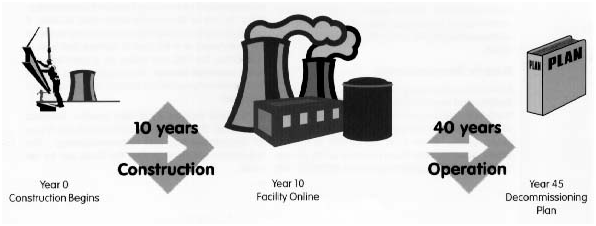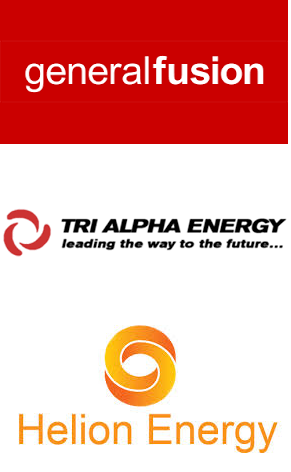
Blog
-
Geiger Readings for Oct 28, 2015
Ambient office = 135 nanosieverts per hourAmbient outside = 110 nanosieverts per hourSoil exposed to rain water = 119 nanosieverts per hourAvocado from Central Market = 111 nanosieverts per hourTap water = 108 nanosieverts per hourFiltered water = 97 nanosieverts per hour -
Radioactive Waste 151 – Decommissioning and Spent Nuclear Fuel – Part One of Two Parts
Part One of Two Parts
As I have mentioned before in previous blog posts, I am very concerned about the decommissioning of closed nuclear reactors. Decommissioning is a complex and expensive process. The reactor has to be disassembled and the pieces properly disposed of. The U.S. has about a hundred operating nuclear power reactors. All of them will reach the end of their licensed life-spans within the next few decades. A few have already been shut down because they were getting too expensive to repair and maintain or because they could not compete in the energy market.
The Nuclear Regulatory Commission requires the owners of all nuclear power plants to have sufficient funds set aside for decommissioning. Owners of about twenty percent of the operating nuclear power reactors in the U.S. do not have sufficient funds set aside and are being pressured by the NRC. Some of the set aside funds are invested in stocks. If the stock market crashes again, those funds could be wiped out. If a company that owns and operates nuclear power reactors goes bankrupt, presumably it would be up to the tax payers to come up with sufficient funds to decommission closed reactors.
If time comes to decommission a nuclear power reactor and the funds are not available, then it might just be boarded up and fenced off until money does become available. Given the desperate financial situation of the state and federal governments these days and the dire predictions of coming crises, such mothballed plants could sit there for decades without being decommissioned. Radioactive materials could leak out over time, severe weather could breach the containment or terrorists could deliberately loot or destroy the boarded up plants.
The U.S. government has been making nuclear power plant operators pay into a fund intended to support the construction and operation of a permanent geological repository for spent nuclear fuel. The repository was promised by 1999 but after decades of work, the Yucca Mountain nuclear repository project was cancelled in 2009. It is now estimated that there will be no such repository before 2050. At its peak, the fund had around thirty billion dollars. Some of the nuclear power reactors owners have begun to use lawsuits to claw back some of the funds donated.
The law supporting the waste disposal fund was written specifically to exclude the use of such funds for temporary spent nuclear fuel. There has been pressure to change those rules to allow some of the waste fund to be used for that purpose. Recently, some owners have been using some of the money set aside for decommissioning to create dry casks storage for their spent nuclear fuel at the reactors sites. Although this does violate NRC regulations, the NRC has granted exemptions to every owner that has requested permission. An NRC spokesperson said, “All of the plants that have permanently shut down in recent years have sought, and been approved for, the use of decommissioning funds for spent fuel storage costs.”
Please read Part Two
-
Geiger Readings for Oct 27, 2015
Ambient office = 118 nanosieverts per hourAmbient outside = 135 nanosieverts per hourSoil exposed to rain water = 129 nanosieverts per hourCrimini mushroom from Central Market = 77 nanosieverts per hourTap water = 97 nanosieverts per hourFiltered water = 89 nanosieverts per hour -
Nuclear Fusion 23 – Billionaires Invest In Nuclear Fusion Reactors
I have believed for many years that nuclear fusion would ultimately be a better, safer form of energy generation than nuclear fission. Most of the energy in the universe is generated by stellar fusion reactions that fuses hydrogen into helium. Nuclear fusion power reactors are intended to harvest the enormous energy released from the fusion of lighter elements into heavier elements. Unfortunately, it has proven to be extremely difficult to produce the conditions required for nuclear fusion in a reactor on Earth. For a long time, there was a joke about nuclear fusion always being forty years in the future. Now, however, the timeline has dropped and nuclear fusion may be only ten years in the future. There are currently at least six companies working on designs for small nuclear fusion reactors in the U.S. and Canada. I have discussed this research in previous blogs. The prospect are bright enough to attract private billionaire investors.
Jeff Bezos, the founder of Amazon.com has invested in General Fusion, a British Columbia startup. GF has received twenty million in funding from the Canadian government and seventy four million from venture capitalists. GF utilizes a spinning sphere of liquid metal which develops a cavity in the center which holds hydrogen plasma. The sphere is surrounded by pneumatic pistons which slam into anvil pistons that form the sphere containing the liquid metal. The shock wave collapses the metal into the cavity and generates a fusion reaction. Energy released as fast neutrons is captured by a heat exchanger that drives a steam turbine. They intend to start building a full scale prototype 100 megawatt system in 2017.
Paul Allen, co-founder of Microsoft is investing in Tri Alpha Energy in Foothill Ranch, California near Los Angles. TAE has raised over two hundred million dollars. The Rockefeller family is also an investor. TAE is approaching nuclear fusion uses colliding beams of ions inside a truck sized cylindrical vacuum chamber lined with solenoids which create a magnetic field. The combination heats a plasma and creates a fusion reaction. Ions propelled by the fusion reactions are circulated past electrodes to generate power. TAE is working on a one hundred megawatt power generator prototype.
Paul Thiel, co-founder of PayPal has invested in Helion Energy based in Seattle, Washington. Helion has received a total of four million dollars from the U.S. government which has thirty million dollars allocated for nuclear fusion research. Helion’s approach is to apply powerful magnetic fields to compress and heat a hydrogen plasma once a second. Their reactor recovers electricity directly from the rebound of the magnetic fields and does not require additional equipment like a steam turbine to generate energy for the power grid. Helion will need two hundred million in funding to construct the commercial pilot plant. They hope to be able to start building commercial systems that generate fifty megawatts in 2022. One of Helion’s goals is to make power reactors for the developing world.
If any of these companies can actually build a competitive power generator based on nuclear fusion in the near future, we might be able to achieve a significant reduction in carbon emission to reduce the impact of climate change.
-
Geiger Readings for Oct 26, 2015
Ambient office = 118 nanosieverts per hourAmbient outside = 135 nanosieverts per hourSoil exposed to rain water = 129 nanosieverts per hourIceberg lettuce from Central Market = 77 nanosieverts per hourTap water = 97 nanosieverts per hourFiltered water = 89 nanosieverts per hour -
Radiation News Roundup Oct 25, 2015
-
Geiger Readings for Oct 25, 2015
Ambient office = 118 nanosieverts per hourAmbient outside = 135 nanosieverts per hourSoil exposed to rain water = 129 nanosieverts per hourAvocado from Central Market = 77 nanosieverts per hourTap water = 97 nanosieverts per hourFiltered water = 89 nanosieverts per hour





